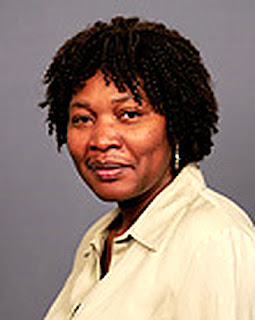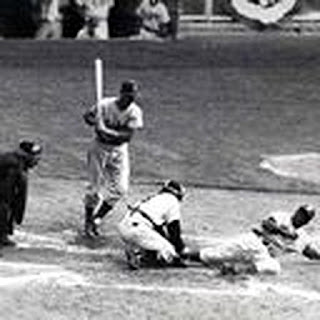Los Angeles—This October the Hammer Museum will present Now Dig This! Art and Black Los Angeles 1960 – 1980, a comprehensive exhibition that examines the vital legacy of the city’s African American visual artists. Now Dig This! comprises 140 works from 35 artists that have rarely been shown in a museum setting and includes early pieces by now well-established artists. The exhibition expands the art historical record by presenting an array of artists, some not widely recognized by a broad public, and connecting their work to the movements, trends, and ideas that fueled the arts in Los Angeles during this period. The work of these African American practitioners was animated to an extent by the civil rights and Black Power movements reflecting the changing sense of what constituted African American identity and American culture. Artists featured in the exhibition include Melvin Edwards, Fred Eversley, David Hammons, Maren Hassinger, Senga Nengudi, John Outterbridge, Alonzo Davis, Dale Brockman Davis, Noah Purifoy, Betye Saar, and Charles White.
Now Dig This! is presented as part of Pacific Standard Time, a collaboration of more than sixty cultural institutions across Southern California. For six months beginning in October 2011 these institutions large and small will tell the story of the birth of L.A.’s art scene and how it became a new force in the art world. Organized by the Hammer and curated by Columbia University professor Kellie Jones, Now Dig This! chronicles and celebrates this nuanced and multicultural history of Los Angeles.
“Pacific Standard Time is a very significant event for the city of Los Angeles. The deep and remarkable history it explores serves as a foundation for the thriving creative community of artists living and working here today,” remarks Hammer director Ann Philbin. “Now Dig This! reveals a specific moment when a group of African American artists, gallerists, writers, and collectors generated a nexus of creativity and influence that is largely unknown to the general public.”

While much has been written about artists like Ed Ruscha, Judy Chicago, Edward Kienholz, and Bruce Nauman, artists like Fred Eversley, John Otterbridge, and Noah Purifoy have not enjoyed the same recognition. Additionally, there has been significant attention paid to Los Angeles’s Ferus Gallery and the development of Artforum magazine, however far less is known about their African American counterparts such as Alonzo and Dale Davis, owners of the Brockman Gallery; and Samella Lewis, who began Black Art: An International Quarterly (now the International Review of African American Art) and wrote the two-volume Black Artists on Art.
“The artists that have been included in Now Dig This! represent a vibrant group whose work is critical to a more complete and dynamic understanding of twentieth century American art. Their influence goes beyond their immediate creative circles and their legacy is something we are only now beginning to fully understand,” says exhibition curator Kellie Jones.
By illuminating the richness and complexity of this creative community, Now Dig This! demonstrates how these African American artists and friends were not working in isolation but were quite integral to the developing U.S. art scene during the latter part of the twentieth century. The exhibition will offer a fuller view of the changing art landscape during this important era of artistic and cultural ferment, as artists shifted from more traditional formats such as painting and works on paper to modes such as assemblage, finish fetish (a West Coast style of minimalism), postminimalism, conceptualism, and performance.
EXHIBITION DESCRIPTION: Presented in the Hammer’s main temporary exhibition galleries, Now Dig This! looks at the period through several framing categories with each artist having his or her own space.
FRONT RUNNERS -- By the early 1960s the West Coast became highly visible among the international arts community with the recognition of assemblage as an important artistic strategy. African American artists such as Betye Saar and Mel Edwards made some of their earliest important works at this time. Charles White, a veteran social realist from Chicago, arrived in Los Angeles in 1956, energizing the black art community and inspiring many young artists who studied under him at Otis Art Institute. Front runners: Melvin Edwards, William Pajaud, Betye Saar and Charles White.
ASSEMBLING -- The Watts Rebellion of 1965 was the largest urban riot at that time in U.S. history. The Rebellion had a profound effect on this community of artists and many began to approach their craft and materials differently. For example, Noah Purifoy claimed that it was the Rebellion that made him a real artist. Purifoy and John Riddle made assemblage works from the detritus of the Watts Rebellion, creating formally impressive pieces that were also highly charged politically. Assembling: Daniel Larue Johnson, John Outterbridge, Noah Purifoy, John Riddle, and Betye Saar.
ARTISTS / GALLERISTS -- Lacking representation in mainstream institutions, African American artists opened their own venues in the 1960s and 1970s. Spaces such as Gallery 32, founded by painter Suzanne Jackson, and the Brockman Gallery—established by brothers Dale and Alonzo Davis, became sites for cutting-edge work and havens for discussions, poetry readings, and fund-raisers for social causes. Samella Lewis was an amazing one-woman institution, opening several galleries and a museum, starting a magazine, and publishing some of the earliest books on this cohort of artists. Artists / Gallerists: Alonzo Davis, Dale Brockman Davis, Suzanne Jackson, and Samella Lewis.
POST/MINIMALISM AND PERFORMANCE -- This section of the exhibition documents the move away from more didactic subject matter toward abstract and dematerialized practices. Fred Eversley was the most visible African American working with the finish fetish style of Los Angeles minimalism in the 1960s. In the 1970s artists such as Senga Nengudi, Maren Hassinger, and David Hammons began to experiment with postminimal ephemerality and performance. Post / Minimalism and Performance: Fred Eversley, David Hammons, Maren Hassinger, Ulysses Jenkins, and Senga Nengudi.
LOS ANGELES SNAPSHOT / FRIENDS -- The exhibition also explores the informal relationships between African American artists in Los Angeles and those in Northern California, like Joe Overstreet and Raymond Saunders, as well as artists of varied ethnic backgrounds, such as Virginia Jaramillo, Ron Miyashiro, and Mark Di Suvero. These relationships are an important part of fully understanding and contextualizing the work of this generation. One gallery in Now Dig This! will illuminate these connections. Friends: John Altoon, Karen Boccalero, Mark Di Suvero, Charles Gaines, Virginia Jaramillo, Marie Johnson Calloway, Houston Conwill, Elizabeth Leigh-Taylor, Sheila Levrant de Bretteville, Ron Miyashiro, Joe Overstreet, Raymond Saunders, Gordon Wagner, Tyrus Wong, and Andrew Zermeño.
Catalogue & Public Programs The exhibition is accompanied by a 350 page, full-color catalogue co-published by Delmonico/Prestel. The publication includes reproductions of works included in the exhibition supplemented by scholarly essays, a comprehensive bibliography, and reproductions of archival materials, including posters, invitations, documentary photographs, and other items recently uncovered. The exhibition will be accompanied by several free public programs, including performances, film screenings, and lectures.
About the Curator: Now Dig This! is curated by Kellie Jones, associate professor in the Department of Art History and Archaeology at Columbia University. Jones’s writings have appeared in numerous exhibition catalogues and publications including NKA, Artforum, Flash Art, Atlantica, and Third Text. Most recently, she curated Energy / Experimentation: Black Artists and Abstraction, 1964–1980 (The Studio Museum in Harlem, 2006). Current book projects include, EyeMinded: Living and Writing Contemporary Art (Duke University Press 2011) and Taming the Freeway and Other Acts of Urban HIP - notism: African American Artists in Los Angeles in the 1960s and 1970s (forthcoming from The MIT Press).
Pacific Standard Time: This exhibition is a part of the Getty Foundation’s Pacific Standard Time program, an extensive citywide initiative (alongside exhibitions at major institutions such as the Los Angeles County Museum of Art and the Museum of Contemporary Art, as well as smaller venues throughout Los Angeles), prompted to revive and supplement neglected aspects of Los Angeles’s rich artistic history from 1945–1980. Pacific Standard Time encompasses developments from modernist architecture and design to multi-media installations; from L.A. Pop to post-minimalism; from the films of the African-American L.A. Rebellion to the feminist happenings of the Woman’s Building; from ceramics to Chicano performance art, and from Japanese-American design to the pioneering work of artists’ collectives. Launched in 2008 and culminating in 2011, Pacific Standard Time will demonstrate the pivotal role played by Southern California in national and international artistic movements since the middle of the twentieth century.
Now Dig This! Art and Black Artists in Los Angeles, 1960-1980 has been made possible by major grants from the Getty Foundation.
Generous support has been provided by the Henry Luce Foundation; the National Endowment for the Arts, a federal agency; The Andy Warhol Foundation for the Visual Arts, which funded a Curatorial Research Fellowship; and The Broad Art Foundation. Additional support has been provided by Eileen Harris Norton Foundation, The Kenneth T. and Eileen L. Norris Foundation, Ina Coleman and Alan Wilson, and V. Joy Simmons MD.
ABOUT THE HAMMER MUSEUM: The Hammer Museum, a public arts unit of the University of California, Los Angeles, is dedicated to exploring the diversity of artistic expression through the ages. Its collections, exhibitions, and programs span the classic to the cutting-edge in art, architecture, and design, recognizing that artists play a crucial role in all aspects of culture and society.
The museum houses the Armand Hammer Collection of Old Master, Impressionist, and Post - Impressionist paintings and the Armand Hammer Daumier and Contemporaries Collection. The Hammer’s newest collection, the Hammer Contemporary Collection, is highlighted by works on paper, particularly drawings and photographs from Southern California. The museum also houses the Grunwald Center for the Graphic Arts, comprising more than 45,000 prints, drawings, photographs, and artists’ books from the Renaissance to the present; and oversees the management of the Franklin D. Murphy Sculpture Garden on the UCLA campus.
The Hammer presents major single-artist and thematic exhibitions of historical and contemporary art. It also presents approximately ten Hammer Projects exhibitions each year, providing international and local artists with a laboratory-like environment to create new work or to present existing work in a new context.
As a cultural center, the Hammer offers a diverse range of free public programs throughout the year, including lectures, readings, symposia, film screenings, and music performances. The Hammer’s Billy Wilder Theater houses these widely acclaimed public programs and is the new home of the UCLA Film & Television Archive’s renowned cinematheque.
HAMMER MUSEUM INFORMATION: For current program and exhibition information call 310-443-7000 or visit www.hammer.ucla.edu.
Hours: Tuesday, Wednesday, Friday, Saturday, 11am – 7pm; Thursday, 11am – 9 pm; Sunday, 11am – 5 pm; closed Mondays, July 4, Thanksgiving, Christmas, and New Year’s Day.
Admission: $10 for adults; $5 for seniors (65+) and UCLA Alumni Association members; free for Museum members, students with identification, UCLA faculty / staff, military personnel, veterans, and visitors 17 and under. The Museum is free on Thursdays for all visitors. Public programs are always free.
Location / Parking: The Hammer is located at 10899 Wilshire Boulevard, at Westwood Boulevard. Parking is available under the Museum. Rate is $3 for three hours with Museum validation. Bicycles park free.
Hammer Museum Tours: For group tour reservations and information, call 310-443-7041.
For Immediate Release: September 21, 2011 Contact: Sarah L. Stifler, Hammer Communications, 310-443-7056, sstifler@hammer.ucla.edu



































